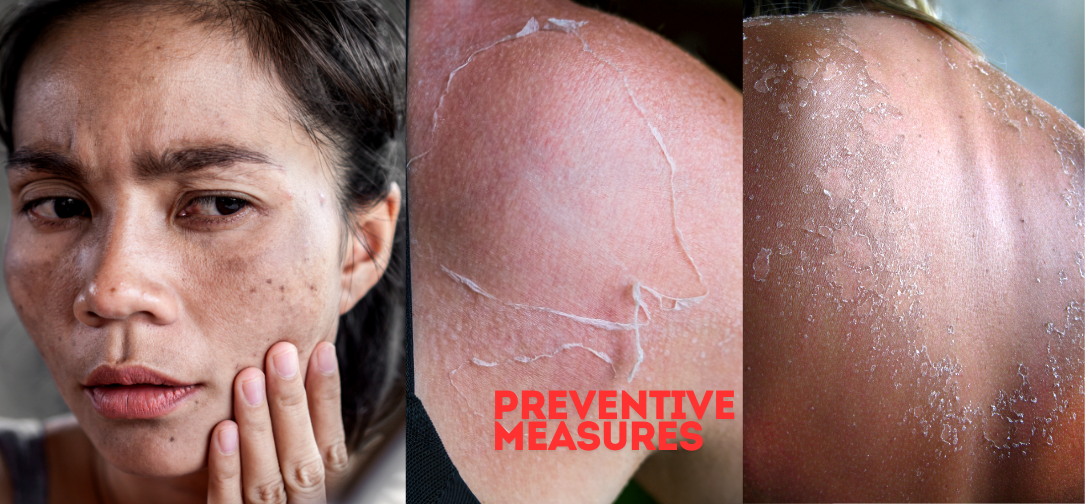Public Health
Skin Cancer and Sun Protection: Staying Safe in the Sun

Skin cancer has become an increasingly significant public health issue worldwide. Rising global temperatures and growing exposure to ultraviolet (UV) radiation have contributed to escalating skin cancer rates, particularly in regions where individuals spend substantial time outdoors. Despite increased awareness, skin cancer incidence continues to rise, making sun protection more critical than ever. This article will provide an in-depth analysis of skin cancer, current statistics, risk factors, and sun protection strategies to stay safe under the sun.
Types of Skin Cancer and Prevalence
Skin cancer is the most common type of cancer globally, particularly in regions with high exposure to UV radiation, such as the United States, Australia, and parts of Europe. The main types of skin cancer are:
- Basal Cell Carcinoma (BCC) – This is the most frequently diagnosed type of skin cancer, accounting for about 80% of all skin cancer cases. While BCC is less likely to spread to other parts of the body, it can be disfiguring if untreated.
- Squamous Cell Carcinoma (SCC) – Representing approximately 20% of skin cancer cases, SCC can spread to other organs if not detected early.
- Melanoma – Although less common, melanoma is the deadliest form of skin cancer due to its potential to metastasize. In 2024, an estimated 200,340 new cases of melanoma are projected to be diagnosed in the U.S. alone, with the highest incidence rates observed among White populations.
The American Academy of Dermatology (AAD) estimates that 1 in 5 Americans will develop skin cancer during their lifetime, highlighting the growing prevalence of the disease. Moreover, the Centers for Disease Control and Prevention (CDC) reports that more than 9,500 people are diagnosed with skin cancer daily in the U.S., further underlining the importance of sun protection efforts.
Current Trends in Skin Cancer Incidence
Recent data shows that skin cancer rates have reached all-time highs. In the UK, melanoma cases are expected to hit 20,800 in 2024, reflecting a 30% increase in the past decade. This rise is attributed to various factors, including prolonged sun exposure, the popularity of tanning beds, and an aging population. The sharpest increase has been observed in adults over 80, likely due to cumulative sun damage over their lifetimes.
Younger age groups are also seeing rising melanoma rates. Adults aged 25-49 have experienced a 7% increase in melanoma incidence over the past ten years. While younger generations are generally more aware of the dangers of UV radiation, historical habits such as tanning without sun protection contribute to these figures.
Risk Factors for Skin Cancer
While anyone can develop skin cancer, certain groups are at higher risk:
- Fair Skin: Individuals with light skin, hair, and eyes are more susceptible to UV damage. The lifetime risk of developing melanoma is approximately 3% for White populations but much lower for Black individuals (0.1%) and Hispanics (0.5%).
- Excessive UV Exposure: Frequent sun exposure without protection is the leading cause of skin cancer. UV radiation from the sun and artificial sources like tanning beds is responsible for about 90% of melanoma cases in the UK.
- Personal and Family History: Those with a personal or family history of skin cancer are at greater risk.
- Age: The risk of developing skin cancer increases with age due to cumulative sun exposure over a lifetime. However, younger people, especially those who have experienced severe sunburns, are also vulnerable.
Sun Protection and Preventive Measures
Despite the alarming rise in skin cancer cases, most cases are preventable through effective sun protection strategies. Experts emphasize the importance of being sun-smart, especially during peak UV hours from 11 a.m. to 3 p.m. Here are the key steps to reduce your risk:
Seek Shade: Limit direct exposure to the sun during peak hours. Staying in the shade significantly reduces the risk of harmful UV radiation penetrating your skin.
Wear Protective Clothing: Long-sleeved shirts, wide-brimmed hats, and sunglasses with UV protection help block harmful rays.
Use Sunscreen: The American Academy of Dermatology recommends applying a broad-spectrum sunscreen with at least SPF 30. Sunscreen should be applied generously and reapplied every two hours or more frequently when sweating or swimming. High SPF sunscreens are crucial for protecting against both UVA and UVB rays.
In some regions, sun protection is increasingly seen as a public health responsibility. For example, Australia has implemented widespread sun safety campaigns, including providing shaded areas in schools and public spaces and promoting regular use of sunscreen and protective clothing.
The Dangers of Tanning Beds
One of the leading causes of preventable skin cancer is the use of indoor tanning beds. Tanning beds emit UV radiation that is often stronger than natural sunlight. Studies show that using a tanning bed before the age of 35 increases the risk of melanoma by 59%, making them particularly dangerous for young people. In response, many countries have introduced stricter regulations, including bans on tanning bed use for minors.
Innovations in Early Detection and Treatment
While the rise in skin cancer incidence is concerning, advances in early detection and treatment have improved survival rates. For instance, melanoma survival has doubled in the last 50 years due to innovations in medical research and greater public awareness of skin cancer symptoms. Regular self-examinations, as well as annual check-ups with dermatologists, are critical for catching skin cancer in its early stages when treatment is most effective.
New treatment options, such as immunotherapy and targeted therapies, have also improved outcomes for patients with advanced melanoma. The five-year survival rate for patients diagnosed with early-stage melanoma is now over 99%, but it drops significantly for later stages, making early detection crucial.
Conclusion
As global skin cancer rates continue to rise, the importance of sun protection cannot be overstated. Simple measures like using sunscreen, wearing protective clothing, and avoiding tanning beds can dramatically reduce the risk of developing skin cancer. Although skin cancer affects individuals of all skin tones, those with lighter complexions are at higher risk. By staying informed and taking proactive steps to protect against UV radiation, individuals can significantly lower their chances of developing this highly preventable disease.
Governments and healthcare organizations around the world are intensifying their sun safety campaigns, but personal responsibility remains key. Whether through shade, clothing, or sunscreen, protecting your skin should be a priority whenever stepping outside, especially in sun-prone environments.
-

 Business6 days ago
Business6 days agoS&P 500 Soars in Best May in Decades Amid Tariff Relief and Nvidia’s Surge
-

 Immigration6 days ago
Immigration6 days agoTrump’s Immigration Crackdown: Legal Battles and Policy Shifts
-

 Business6 days ago
Business6 days agoUS Stock Market Soars in May Amidst Tariff Tensions and Inflation Worries
-

 Government6 days ago
Government6 days agoTrump Administration’s Government Reshaping Efforts Face Criticism and Legal Battles
-

 Business6 days ago
Business6 days agoTrump’s Tariffs: A Global Economic Reckoning
-

 Foreign Policy4 days ago
Foreign Policy4 days agoInside Schedule F: Will Trump’s Federal Workforce Shake-Up Undermine Democracy?
-

 Press Release3 days ago
Press Release3 days agoIn2space Launches Campaign to Make Space Travel Accessible for All






























